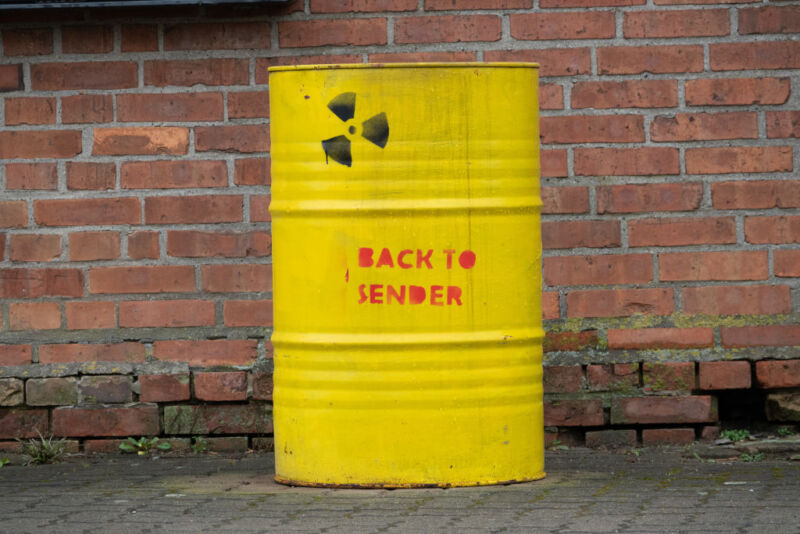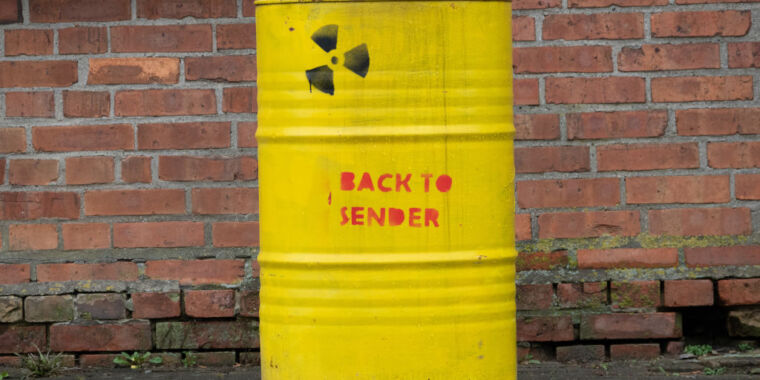
picture alliance | Getty Images
Lindsay Krall decided to study nuclear waste out of a love for the arcane. Figuring how to bury radioactive atoms isn’t exactly simple—it takes a blend of particle physics, careful geology and engineering, and a high tolerance for reams of regulations. But the trickiest ingredient of all is time. Nuclear waste from today’s reactors will take thousands of years to become something safer to handle. So any solution can’t require too much stewardship. It’s gotta just work, and keep working for generations. By then, the utility that split those atoms won’t exist, nor will the company that designed the reactor. Who knows? Maybe the United States won’t exist either.
Right now, the US doesn’t have such a plan. That’s been the case since 2011, when regulators facing stiff local opposition pulled the plug on a decades-long effort to store waste underneath Yucca Mountain in Nevada, stranding $44 billion in federal funds meant for the job. Since then, the nuclear industry has done a good job of storing its waste on a temporary basis, which is part of the reason Congress has shown little interest in working out a solution for future generations. Long-term thinking isn’t their strong suit. “It’s been a complete institutional failure in the US,” Krall says.

But there’s a new type of nuclear on the block: the small modular reactor (SMR). For a long time, the US nuclear industry has been stagnating, in large part because of the tremendous costs of building massive new plants. SMRs, by contrast, are small enough to be built in a factory and then hauled elsewhere to produce power. Advocates hope this will make them more cost-effective than the big reactors of today, offering an affordable, always-on complement to less-predictable renewables like wind and solar. According to some, they should also produce less radioactive waste than their predecessors. A Department of Energy-sponsored report estimated in 2014 that the US nuclear industry would produce 94 percent less fuel waste if big, old reactors were replaced with new smaller ones.
Krall was skeptical about that last part. “SMRs are generally being marketed as a solution—that maybe you don’t need a geological repository for them,” she says. So as a postdoc at Stanford, she and two prominent nuclear experts started digging through the patents, research papers, and license applications of two dozen proposed reactor designs, none of which have been built so far. Thousands of pages of redacted documents, a few public records requests, and a vast appendix full of calculations later, Krall, who is now a scientist with Sweden’s nuclear waste company, got an answer: By many measures, the SMR designs produce not less, but potentially much more waste: more than five times the spent fuel per unit of power, and as much as 35 times for other forms of waste. The research was published in the Proceedings of the National Academy of Sciences earlier this week.
Startups seeking licenses to build SMR designs have disputed the findings and say they’re prepared for whatever waste is generated while the US sorts out permanent disposal. “Five times a small number is still a really small number,” says John Kotek, who leads policy and public affairs at the Nuclear Energy Institute, the industry’s trade association.
But the authors say the “back-end” of the fuel cycle, which includes waste and decommissioning, should be a bigger factor in what they consider to be the precarious economics of the new reactors. “The point of this paper is to prompt a discussion,” says Allison Macfarlane, a former chair of the US Nuclear Regulatory Commission and a coauthor of the paper. “We can’t get to how much it is going to cost until we understand what we’re dealing with.”
Designing smaller reactors may make them easier to build, but it also creates a problem: neutron leakage. Reactors produce energy by firing neutrons at uranium atoms, causing them to split. This sends out more neutrons, which in turn find other targets and cause a chain reaction. But some of these neutrons miss. Instead, they fly out of the core, hitting other parts of the reactor that become “activated,” or radioactive. Inside SMRs, there’s less space for the neutrons to jostle around in, so more of them leak. There’s no getting around the issue. “We’re basically dealing with gravity here, the laws of physics,” Krall says. “It’s something you have to engineer your way around.”








